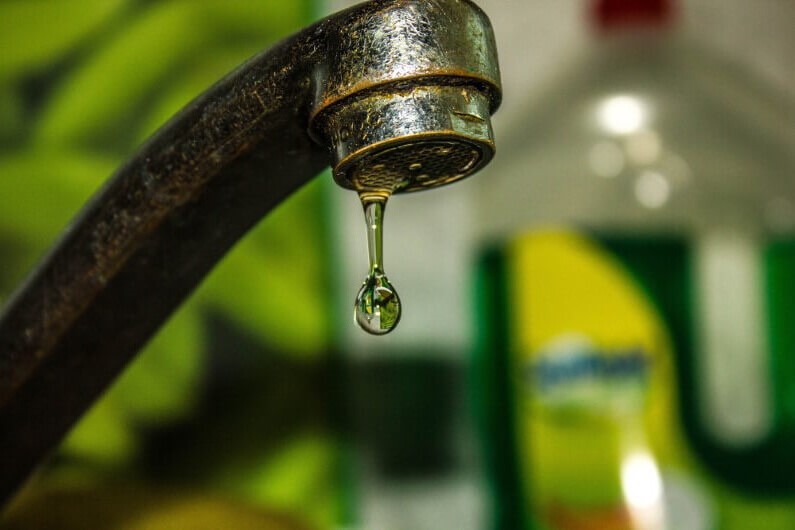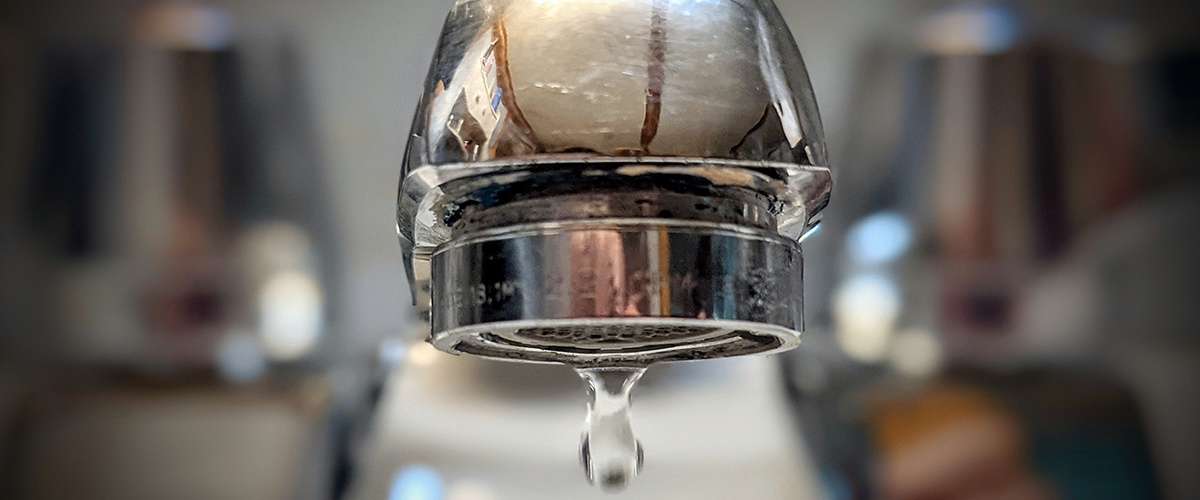When It's Necessary to Resolve a Malfunctioning Faucet
This WebsiteWhat're your insights and beliefs about 4 Common Reasons for a Leaky Faucet?

Dripping faucets might seem like a small inconvenience, but their influence exceeds simply the aggravation of the sound. From drainage to sustaining unnecessary economic expenses and wellness risks, disregarding a leaking faucet can result in various consequences. In this short article, we'll explore why it's crucial to address this usual house problem immediately and properly.
Wastefulness of Water
Ecological Influence
Dripping taps contribute considerably to water wastage. According to the Environmental Protection Agency (EPA), a solitary faucet trickling at one drip per second can squander greater than 3,000 gallons of water annually. This not just strains water sources yet also influences environments and wild animals dependent on them.
Step-by-Step Guide to Dealing With a Dripping Faucet
Tools Needed
Prior to trying to repair a trickling tap, collect the essential devices, consisting of a flexible wrench, screwdrivers, replacement parts (such as washing machines or cartridges), and plumber's tape.
Usual Tap Issues and Their Solutions
Determine the kind of tap and the details issue triggering the drip. Usual issues consist of worn-out washing machines, corroded valve seats, or faulty O-rings. Refer to producer instructions or online tutorials for step-by-step advice on repairs.
Financial Prices
Enhanced Water Costs
Beyond the ecological influence, leaking taps can inflate water costs significantly. The collected wastefulness gradually converts into higher utility expenditures, which could have been prevented with prompt fixings.
Prospective Property Damages
Moreover, prolonged dripping can bring about damage to components and surface areas surrounding the faucet. Water buildup can trigger staining, rust, and even architectural concerns if left neglected, causing extra fixing expenses.
Health Concerns
Mold and Mold Development
The constant presence of moisture from a leaking tap creates an ideal environment for mold and mildew and mildew development. These fungi not just jeopardize interior air quality however likewise position health and wellness threats, particularly for individuals with breathing conditions or allergies.
Waterborne Diseases
Stagnant water in dripping taps can become a breeding ground for microorganisms and other microorganisms, enhancing the danger of waterborne illness. Impurities such as Legionella bacteria flourish in stationary water, possibly bring about significant diseases when consumed or breathed in.
DIY vs. Specialist Repair service
Pros and Cons of DIY Repair Service
While some may attempt to deal with a dripping tap themselves, DIY fixings come with their own set of challenges. Without appropriate expertise and devices, do it yourself efforts can worsen the issue or cause insufficient repair services, prolonging the problem.
Benefits of Employing an Expert Plumber
Working with an expert plumber makes sure that the underlying cause of the leaking faucet is dealt with successfully. Plumbings possess the expertise and devices to detect and repair faucet problems efficiently, conserving time and decreasing the danger of additional damages.
Environmental Obligation
Individual Payment to Preservation
Taking obligation for fixing dripping taps straightens with wider efforts towards water preservation and ecological sustainability. Every person's actions jointly make a significant effect on protecting valuable resources.
Lasting Living Practices
By prioritizing timely fixings and adopting water-saving habits, people contribute to lasting living techniques that benefit both present and future generations.
Preventive Measures
Regular Maintenance Tips
To prevent trickling faucets, carry out regular upkeep such as cleaning aerators, checking for leaks, and replacing damaged parts immediately. In addition, think about setting up water-saving devices or updating to extra reliable components.
Value of Prompt Fixes
Dealing with dripping faucets as quickly as they're noticed stops more water waste and possible damages, eventually saving both water and cash in the future.
Effect On Home Worth
Perception of Well-Maintained Property
Maintaining a property in good condition, including attending to upkeep problems like dripping faucets, enhances its perceived worth and worth among possible purchasers or renters.
Influence on Resale Value
Qualities with well-kept plumbing fixtures, consisting of taps, command higher resale values in the real estate market. Addressing trickling taps can contribute to a positive impact during property assessments and negotiations.
Final thought
Addressing a leaking tap surpasses simple benefit; it's a vital step towards preserving water, minimizing monetary costs, and guarding health and property. Whether with do it yourself repair work or expert support, doing something about it to take care of trickling taps is a small yet impactful method to advertise responsible stewardship of resources and contribute to a much healthier, much more lasting future.
How to Fix a Leaky Faucet: Step-by-Step Repair Guide
A leaky faucet may seem like a simple annoyance, but if it's not fixed promptly, that leak could cost hundreds to potentially thousands. From water damage to mold, mildew, and high water bills, even a tiny leak can be catastrophic if left unattended. Damage like this can even affect the overall value of your home, so it's important to take the right approach for leaky faucet repair. You may need the help of a plumber in some cases, but we've got a few tips you can try on how to fix a leaky faucet before calling the pros.
Four Faucet Types
When you're learning how to fix a leaky faucet, the first step is knowing what kind of faucet you're working with! There are four common types.
Cartridge Faucets
Cartridge faucets come in one- or two-handled varieties. In one-handled cartridge faucets, hot and cold water combines in a single cartridge. In the two-handled versions, hot and cold water are controlled separately and mixed in the faucet.
Ball Faucets
Ball faucets have a single lever you push up and down to adjust the pressure and rotate to change the temperature. A slotted metal ball controls the amount of water allowed into the spout.
Compression Washer Faucets
They're the oldest type of faucet, but they're still used in many homes — especially older ones. Compression faucets have two separate handles that, when turned, raise or lower the washer that seals a water valve. This valve stops water from flowing through the faucet when it is turned off.
Disc Faucets
Disc faucets rarely need to be repaired due to their maintenance-free design. The water flow is controlled by two discs — the upper one raises and lowers against a fixed lower disc, creating a watertight seal. If your disc faucet starts leaking, you may need to replace the seals or clean residue buildup from the inlets.
Fixing a Leaky Faucet
Step 1: Turn Off the Water
Whether you're learning how to fix a leaky bathtub faucet or how to fix a leaky kitchen faucet, always turn off the water supply to your working area when you're fixing a leak. The last thing you want is a flood added to your list of things to fix.
Look for the shutoff valves below your sink or around the tub and turn them clockwise to stop the water flow. If your faucet doesn't have shutoff valves, you may need to turn off the water for the whole house. Check to make sure it's off by turning the faucet on. If nothing comes out, you're ready to start the repair.
Step 2: Take Apart the Faucet
How you disassemble your faucet depends on the type of fixture you have. You can use a flathead screwdriver to remove the caps on top of the handle or handles for cartridge and compression faucets. Inside, you should see handle screws. Unscrew these with a screwdriver to remove the handle.
Disc- and ball-style faucets will typically have an inlet screw near the handle, and removing that will reveal the interior of the faucet.
Detach the Valve Stem
For cartridge- and compression-style faucets, you'll see the inner valve stem or cartridge once you remove the faucet handles. If you have a compression faucet, unscrew the brass valve stem. If you have a cartridge faucet, pull out the cartridge. If your cartridge has been in place for a while, it may require some tools or extra force to remove it due to mineral deposits.
Examine and Replace Parts
Once you've removed the parts, check them out to confirm what needs to be replaced. You may see corroded rubber washers, O-rings, stems, or cartridges. On a ball-style faucet, check the seats and springs for damage.
If you need to repair a leaky disc faucet, check the inlet and seals on the lower disc.
Once you determine what parts must be replaced, visit your local hardware store. Bring the damaged parts with you to ensure you can purchase the correct components to replace them.
Clean Valves and Faucet Cavity
If you've removed a stem or cartridge, you may notice mineral buildup in the faucet's threads. Use white vinegar to clean the valve seat by soaking it for a few minutes, then scrub it away with a soft toothbrush and rinse with warm water. You can also clean the interior of the faucet in the same way.
Reassemble the Faucet
Once your faucet is cleaned and the required parts have been replaced, it's time to reassemble it. Put the pieces back together and slowly turn the water supply back on. Doing this slowly is crucial because too much initial water pressure can damage the new hardware you've just installed.
https://homewarranty.firstam.com/blog/how-to-fix-leaky-faucet

As a passionate reader on , I thought sharing that post was a great idea. Make sure you pause to promote this write-up if you appreciated it. I appreciate your readership.